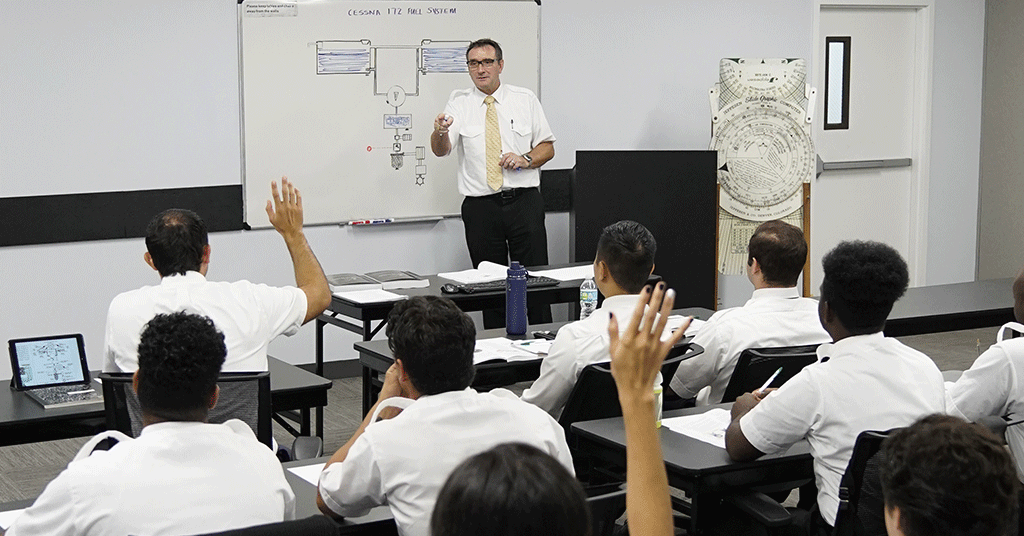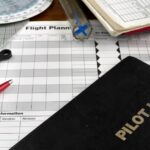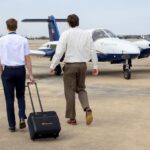By Steven Daun, National Chief Pilot
The airline business has not always been as it is today. The operations involved in running an airline were different, as were the crew employment, training processes, and equipment. During the 70s, 80s, and early 90s, many airlines shut down only to reopen under a different name or variation of their original name. A good example of this was Braniff Airways. They initially started and operated from 1948 to 1965. Braniff came back from 1983 to 1989 as Braniff, Inc., and then came back again as Braniff International Airlines from 1991 to1992. Each time they came back, it was with different airplanes and people. Many U.S. carriers had consistent furloughs. Many pilots were on furlough for two to four years before returning to a flying job, if they returned at all.
As pilots know from each of those periods, airline hiring seemed to go in five-year cycles. It seemed as though every five years, an airline would reduce its size or shut down, and furloughs became a way of life for pilots and flight attendants. Many would jump over to other airlines, while others would take jobs in other industries. When hiring returned, they would find another airline and move forward. Often this would mean moving upward or backward, depending on the airline you ended up working for. Much of this was done on the buddy system as the internet and cell phones weren’t invented yet.
During this time, many pilots were able to find jobs in Africa, the Middle East, and South and Central America, thus the “Ex-Pat” pilot career was born. These were American pilots who were flying for many different airlines throughout the world.
It is important to remember that back then, there were a lot of pilots and not enough jobs. Airlines would require 5,000 hours or more before considering a pilot for a first officer position. Many pilots overcame this by becoming flight engineers and working their way to the right seat. There were also many flight engineers who started as mechanics and worked their way up to becoming pilots.
If you think about these numbers, it doesn’t take much to realize that for every two pilots flying the line, another pilot was always in the making by way of the flight engineer. This meant the industry always had a small but steady flow of pilots working their way up to the front seats. Once the standard became two man cockpits, the potential new flight engineer to pilot option disappeared.
As you can see, it was a rough road to establishing a career as a professional pilot. Most pilots did so out of a pure passion for flying. They didn’t care what they were flying or where just as long as they were flying.
By the time we entered the 90s, the number of pilots over 55 was fast approaching the number under 55. Many in the industry started to see the writing on the wall. Unless congress did something about the mandatory retirement age of 60, there would be a shortage of pilots. In 2007 the mandatory retirement age for pilots was raised to 65. This, however, was nothing more than a band-aid for the true pilot shortage that would soon hit the industry.
Today’s pilots don’t suffer from airline furloughs. They don’t know what it is like to fly for five or ten different airlines because of airlines going out of business. Today’s pilots don’t know what it is like to start in an airline position making a little more than minimum wage just to get the hours. Today is a whole new ball game for would-be airline pilots. In many ways today, getting and keeping a job is much easier, not to mention earning five times more than their counterparts just 15 years ago.
In 2009, the industry was set back on its heels by the Colgan Air accident. Congress raised the time and certificate requirements for pilots wanting a career with the airlines. This added to the number of pilots forced into mandatory retirement at 65, creating the perfect storm in aviation employment.
During this time, it is also important to mention that guidance counselors in high schools and colleges were not recommending careers in aviation to their students. They did not understand the industry and guided many would-be pilot students into other disciplines.
In January 2020, COVID-19 hit in the form of a global pandemic. Travel, for the most part, stopped. Airlines were parking airplanes at record numbers. Many companies were able to convince higher seniority pilots to take early retirement while other pilots who were forced to stop flying took jobs in other industries. This was an unprecedented event, and nobody knew what to expect.
As COVID slowed and travel increased, many airlines found themselves without an ample number of crews to fly the equipment they had initially parked. Rather than cutting schedules, they tried to maintain their schedules by increasing duty times to the maximum. This may have worked on paper, but as soon as pilots were sick or taking off for vacation, the schedules suffered, resulting in what we now see as canceled and delayed flights. In trying to address this, the airlines reverted to ensuring that they could get as many seats into their aircraft as possible and that all of those seats were occupied.
So here we are halfway through 2022 and the airlines are trying to come up with different ways to find pilots. Some have cadet academies, while others have flow-through programs with different flight schools. While they are doing something, it is too little too late. It seems like everywhere you look, there is an ad that says “fastest way to the airlines.” Truth be told, it takes 2 – 3 years to train a pilot from zero hours until they qualify for the airlines.
Future career pilots need to stop falling for false advertising claims. Statements like “fastest way to the airlines,” “cheapest training,” or “airline specific training” are all empty claims. Nobody can get you to an airline any faster than anyone else. The only exception is a college graduate with a degree in flight technology or a pilot from the military who can qualify for an airline in 750 hours rather than 1,500 hours.
When you look at these ads, you will notice that very few discuss the quality of education you will receive. What good is cheap if it takes you twice as long to achieve your goals. What good is “fastest” if you don’t have a solid base of knowledge on which to build your career? What good is “airline-specific training” if you can’t even master a small plane?
Aviation continues to be one of the most dynamic careers of our time. There has never been a better time to become a pilot. There are more opportunities today for new pilots than there have ever been before. This is your chance to travel the world and make lasting friendships on a global level.
What are you waiting for?










